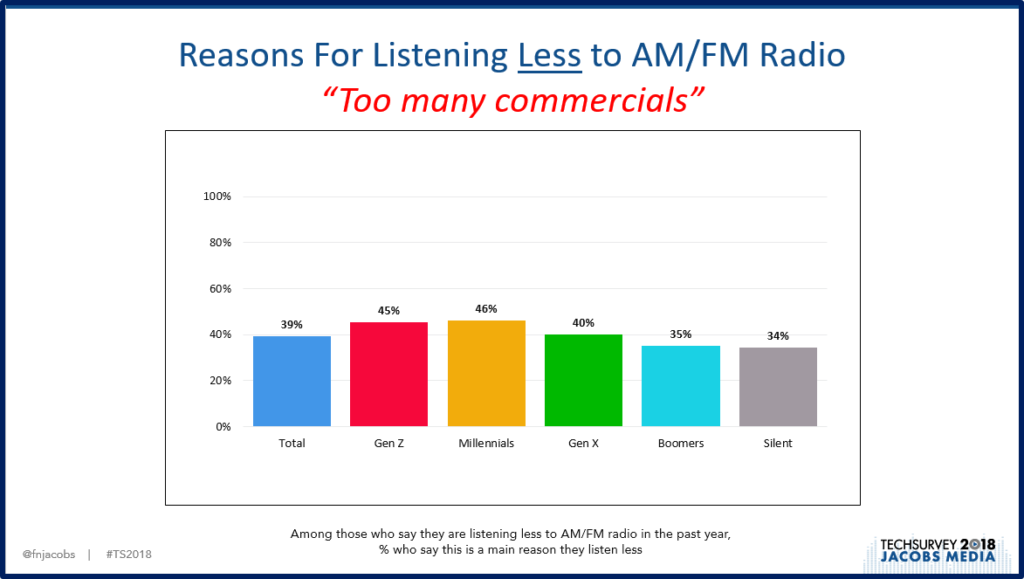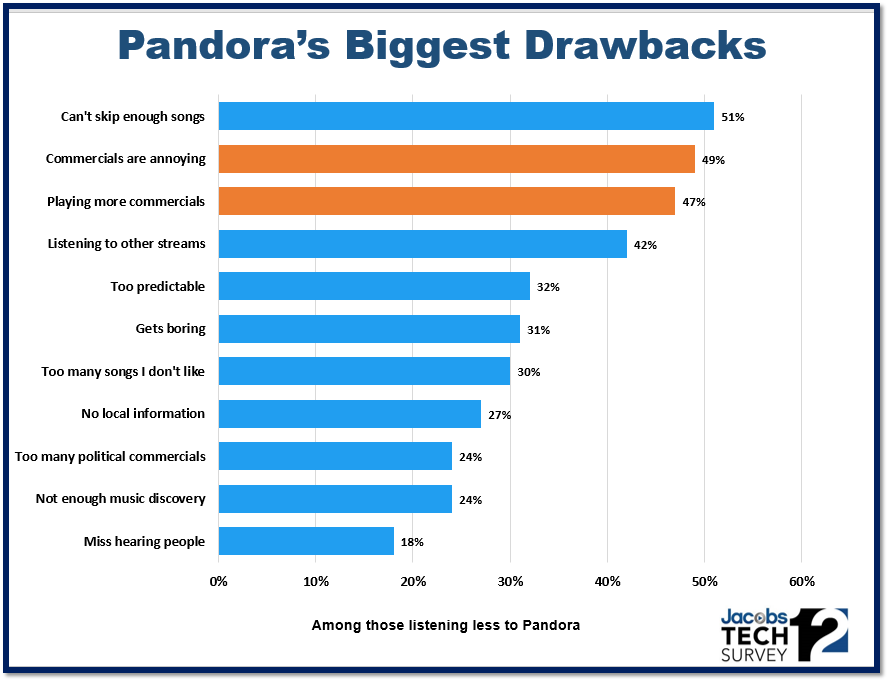
Every radio market manager, sales manager, and program director knows the simple truths about clocks and advertising inventory.
The more commercials you air, the bigger ratings risk you run.
The classic struggle inside virtually every radio station in the country revolves around a finite advertising inventory, revenue pressure, and ratings realities. Yes, that’s a true fact for both public and commercial radio stations.
It’s a fine balance, and therein lies the challenge for radio operators. At what point does that spot inventory cause audience erosion? On the other hand, if you run a station too lean, you can put yourself right out of business.
Researchers have attempted to nail down this complicated equation in myriad ways, always coming up short. With PPM, programmers will tell you they can actually see the impact of dropping a unit or two – or adding them, in order to make a monthly or quarterly sales goal.
Back in the “old days” when radio stations simply competed against other radio stations, the playing field was even. Edges could be gained by implementing programming gimmicks, such as music marathons or commercial-free hours.
But today, radio stations are competing against everybody – streaming pure plays, satellite radio, and personal music collections to name just a few. Consumers compare and contrast, weighing their options, the assets and deficits of each service and how they use them.
Younger music lovers are even more sensitive to advertising that clutters their enjoyment of music. In our soon-to-be-released Techsurvey 2018 we focused on the 10% of our massive sample (64,000+ respondents) who tell us they’ve been listening to less broadcast radio in the past year.
You won’t be surprised to learn the #1 culprit is “too many commercials,” cited by nearly four in ten of those whose radio listening has eroded. And you won’t be shocked to find out those most affected by radio commercials are members of Gen Z and their older Millennial brothers and sisters.

To most in radio, this is obvious stuff. But when you’re working for Pandora, these kinds of findings can be revelatory. And given their predicament – onerous streaming royalty fees, sluggish subscriptions, strong competition, and a very light commercial environment – how do you grow revenue?
Ask any DOS, and they’ll tell you, “Add inventory.” And so the Pandora team set out to investigate the specific pain points of adding more commercials – it’s impact on driving paid subscriptions to access the commercial-free service OR bailing out on Pandora altogether.
And instead of bringing in an outside research company, Wired‘s Elena Lacey, reports they tapped a trio of interns (who went on to become data scientists for Uber, Netflix, and yes, Pandora) to implement a 21-month study among nearly 35 million users.
While this study might not pass muster among research purists, like our massive Techsurveys, the scale of their study is impressive and revealing. You can read about their methodology in the Wired story, but the main takeaway was this;
“Consistently, the study showed that as the number of ads increased, users listened less.”
Programmers in Moline, Modesto, and Miami are simultaneously intoning a loud “Duh.”
The Pandora research team found that just one additional ad per hour not only resulted in less listening time, but also fewer listening days.
I had to go back to 2016 to find the data in our Techsurvey12 – a period when Pandora was a bit more in radio’s crosshairs. At that time, we focused on their audience who reported listening less in the past year. And look what’s right near the top of their list.

Pandora missed the subscription boat, and now finds themselves so far behind Spotify, it may seem hopeless. Globally, Pandora has just 5.5 million paid subscribers compared to more than 70 million for Spotify – a 13x lead.
As a result, Pandora finds itself struggling to make an ad-supported model work among a base of users that once enjoyed for its original commercial-free environment – at no cost. Today, you have to believe there are meetings inside Pandora headquarters, debating units versus minutes, live reads vs. recorded spots, and all the other joys associated with inventory management and listener tolerance.
Pandora, we feel your pain. You are definitely in a box.
Thanks to Lori Lewis and Harvey Kojan who each sent me this story – within minutes of each other.
- What To Do If Your Radio Station Goes Through A Midlife Crisis - April 25, 2025
- A 2020 Lesson?It Could All Be Gone In A Flash - April 24, 2025
- How AI Can Give Radio Personalities More…PERSONALITY - April 23, 2025




Leave a Reply